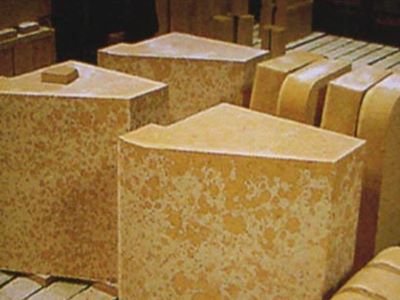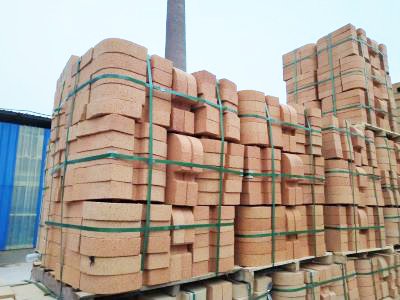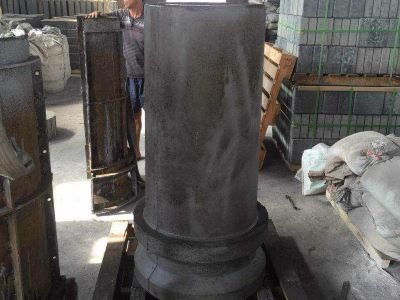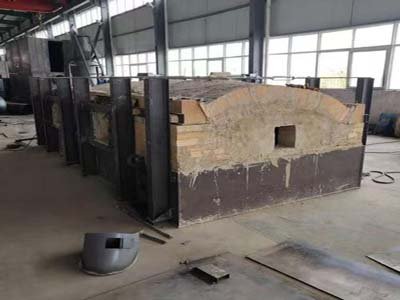Reverberatory furnaces are crucial thermal equipment in industrial smelting. Their lining materials must withstand high temperatures, chemical corrosion, and mechanical wear. Therefore, the rationality of material selection directly affects the furnace life and production efficiency. This article will analyze the refractory material configuration of the reverberatory furnace lining from three aspects: location differences, common brick types and selection points.
1.Differences in the location of the reverberatory furnace lining and material selection
The working environments of different parts of the reverberatory furnace vary significantly, so refractory materials need to be selected accordingly.

First, the furnace top is subjected to high-temperature flame erosion and heat radiation for a long time, and the temperature can reach over 1500℃.
Therefore, refractory materials with high refractoriness and good thermal stability need to be selected. Such as high alumina bricks or silica bricks. Among them, high-alumina bricks have a higher Al₂O₃ content and can resist volume changes at high temperatures, making them more widely applicable.
Secondly, the furnace wall is in direct contact with the melt. Affected by slag corrosion and metal solution penetration, emphasis should be placed on slag resistance and density. Magnesia-chrome bricks or magnesia-alumina bricks are mostly used in alkaline environments, while high-alumina bricks or zircon bricks can be used in acidic environments.
In addition, the furnace bottom bears the weight of the melt and mechanical impact, and requires high-strength and wear-resistant materials. Therefore, magnesia bricks or silicon carbide bricks are commonly used. Among them, the latter is more widely used in large reverberatory furnaces due to its good thermal conductivity and excellent wear resistance.
2.Common refractory brick types and characteristics
The lining of the reverberatory furnace has clear performance requirements for refractory bricks, and different brick types have different emphases. Specifically, there are mainly the following types.

(1)Clay bricks are the basic option
The main component of clay bricks is Al₂O₃ (30%-48%) and the cost is relatively low. Therefore, it is suitable for non-critical areas such as furnace wall insulation.
(2)High alumina bricks are the core material of reverberatory furnaces
High alumina bricks are divided into three grades according to the Al₂O₃ content. The higher the content, the stronger the refractoriness and slag resistance. It is widely used in high temperature areas of furnace top and furnace wall.
(3)Magnesia bricks
Magnesia bricks are mainly composed of magnesium oxide. Its alkaline properties make it resistant to alkaline slag corrosion and it is often used in the slag line area of furnace walls and furnace bottoms.
However, it should be noted that its thermal shock stability is poor and requires reasonable masonry technology.
(4)Silicon carbide bricks
Silicon carbide bricks have high hardness and excellent thermal conductivity. It is particularly effective in areas prone to wear, such as the furnace bottom discharge port, and can extend the life of the lining.

3.Key considerations for selecting refractory materials
When selecting lining materials for reverberatory furnaces, multiple factors need to be considered to balance performance and cost.
First of all, operating temperature is the primary basis. In areas where the temperature exceeds 1400°C for a long time, high-alumina bricks or magnesia bricks must be used to avoid melting loss of clay bricks due to insufficient refractoriness.
Secondly, the melt composition determines the acidity and alkalinity of the material. When processing alkaline slag such as copper and nickel, magnesia-chrome bricks are preferred. When processing acidic slag such as lead and zinc, high alumina bricks or silica bricks are more suitable.
In addition, mechanical stress cannot be ignored. For impact-prone areas such as the feed port and discharge port, high-strength, thermal shock-resistant silicon carbide bricks or corundum bricks must be selected.

Finally, cost-effectiveness needs to be combined. High-performance materials are used in key parts, and economical materials are used in non-key parts to optimize overall life and cost.
Reasonable refractory material configuration is the basis for the stable operation of the reverberatory furnace. Choosing a refractory material supplier with technical strength and quality assurance can ensure that the material properties are accurately matched with furnace conditions, providing reliable support for efficient production.
